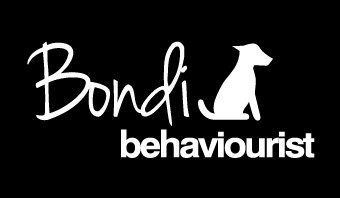Structure, Boundaries and Discipline - What’s their place in dog ownership and training?
Does having boundaries, structure and being disciplined mean we have to use punishment?
When it comes to dog training, many owners in Sydney and beyond are often concerned about how to discipline their dogs if they need to. However, having structure, boundaries and being disciplined in how you set your dogs life up has very little to do with punishment. Instead, it should provide a supportive framework that helps dogs thrive and understand their environment. This blog explores why structure and communication are essential in dog training and how they can help address challenging behaviors, such as aggression or reactivity, without resorting to harsh measures.
Why Structure Matters in Dog Training
Dogs, much like people, thrive when they have a clear understanding of what is expected of them. Structure provides:
Consistency: Dogs learn faster when rules are consistent. Knowing what they have access to and what they don’t creates clarity.
Security: Predictability in their environment helps dogs feel secure, reducing anxiety and stress.
Guidance: With clear boundaries, dogs can make better decisions, knowing which behaviors are acceptable.
Establishing boundaries doesn’t mean being rigid or punitive. It’s about creating a framework where your dog knows the rules of the household and feels supported in following them.
Discipline Without Punishment
One common misconception is that discipline equates to punishment. This couldn’t be further from the truth. Effective discipline in dog training means:
Communicating Boundaries: Clearly communicating what behaviors are acceptable and which are not.
Avoiding Rewards for Rule-Breaking: If your dog breaks a rule, it’s essential not to reward the behavior, but punishment that causes fear, anxiety, breaks trust in you or of course causing physical pain isn’t necessary either.
Addressing the Why: If your dog consistently pushes boundaries, it’s a signal that an underlying need may not be met.
Understanding Behavior as Communication
Dogs communicate through their behavior. If your dog is frequently breaking rules or testing boundaries, it’s essential to ask:
Are Their Needs Being Met? Is your dog getting enough physical exercise, mental stimulation, and social interaction? Do they feel safe?
Are the Boundaries Clear? Ambiguity in rules can confuse dogs. Ensure your expectations are communicated consistently.
Are We Setting Them Up for Success? Dogs need clear guidance and positive reinforcement to learn effectively.
Taking the time to assess these factors can help you better understand your dog’s behavior and address the root cause rather than merely treating the symptoms.
The Role of Responsible Dog Ownership
As dog owners, it’s our responsibility to set our dogs up for success. This involves:
Self-Reflection: If your dog is struggling to follow rules, consider whether you are communicating them clearly.
Consistency: Ensure everyone in the household follows the same training approach.
Positive Reinforcement: Reward desirable behaviors to encourage your dog to repeat them.
By focusing on these aspects, you can build a stronger, more trusting relationship with your dog.
Choosing the Right Training Approach
Whether you’re dealing with a reactive dog, aggression, or simply want to set your new puppy up for success, choosing the right training method is crucial. One-on-one personalized training programs are ideal prioritizing owner involvement, ensuring that both you and your dog learn together in real-life settings.
Conclusion
Dog training isn’t about punishment—it’s about communication, structure, and setting your dog up for success. For dog owners in Sydney searching for solutions to challenges like aggressive dog training or wondering how to train a reactive dog, remember that meeting your dog’s needs and clearly communicating expectations are the keys to long-term success.
If you’re looking for professional support, consider training options that emphasize collaboration and positive reinforcement. With the right approach, you can build a happier, more harmonious relationship with your dog.

